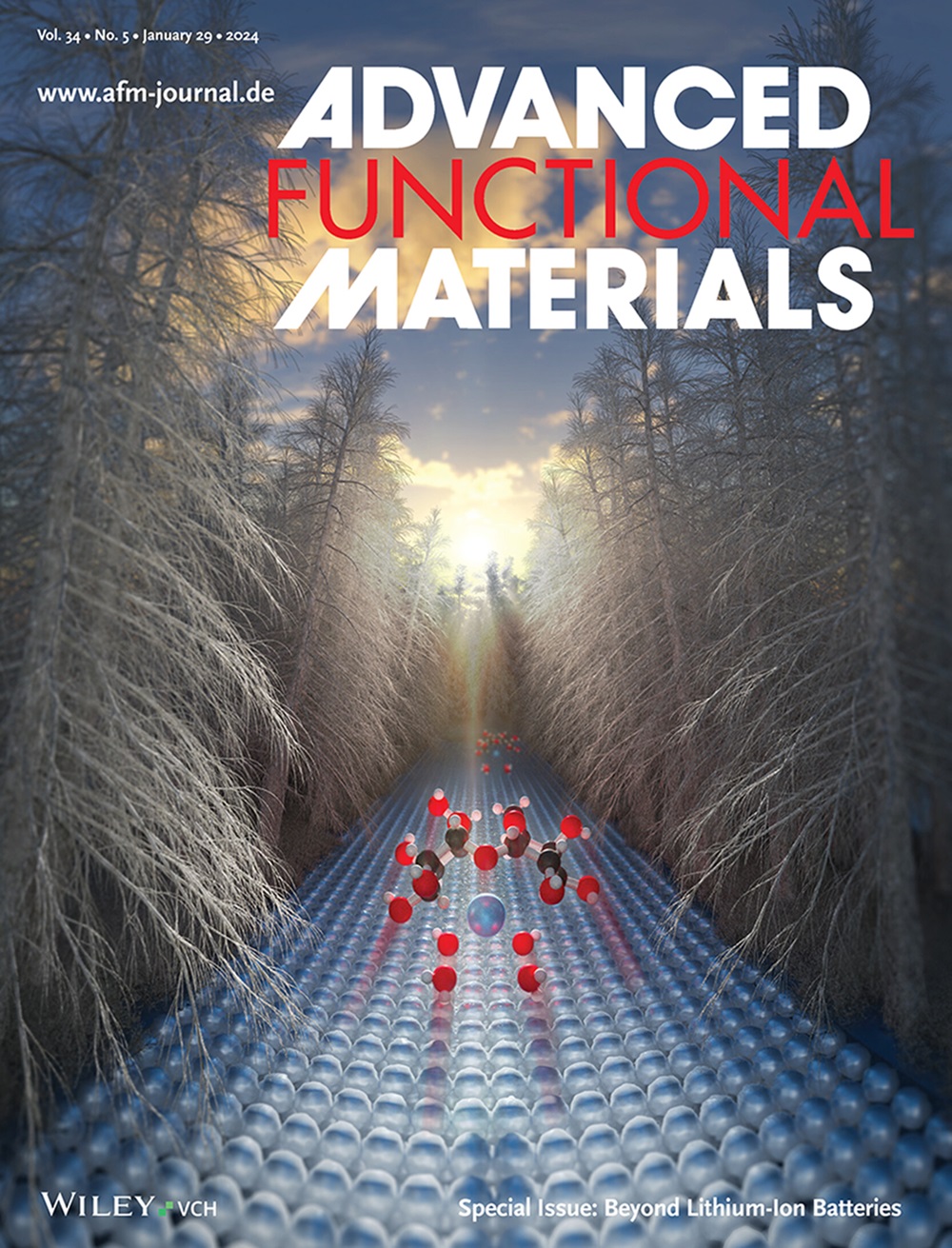构建高性能钙钛矿光伏电池稳定埋藏界面的鲁棒分子桥
IF 19
1区 材料科学
Q1 CHEMISTRY, MULTIDISCIPLINARY
引用次数: 0
摘要
良好的埋藏界面是显著提高钙钛矿太阳能电池性能的关键。然而,在钙钛矿薄膜沉积过程中,如何保证埋藏界面层的完整性是一个挑战。由于钙钛矿前驱体溶液的高极性性质,大多数界面改性材料可以溶解,从而影响器件的可扩展性和长期稳定性。本文引入有机分子修饰了SnO2与钙钛矿之间的埋藏界面,并证明了其溶解度和功能基团对构建良性埋藏界面具有重要意义。此外,SnO2和钙钛矿层之间有效的化学桥接有助于抑制缺陷,提高结晶度,减少能量损失。因此,性能最好的psc获得25.08%的功率转换效率,以及出色的货架和光稳定性(根据ISOS稳定性协议)。这项工作为解决界面挑战提供了一个可扩展的策略,并为可再生能源技术的进一步发展铺平了道路。本文章由计算机程序翻译,如有差异,请以英文原文为准。
Constructing Stabilized Buried Interface via a Robust Molecule Bridge for High‐Performance Perovskite Photovoltaics
A benign buried interface is pivotal for significantly enhancing the performance of perovskite solar cells. However, it is challenging to ensure the integrity of the buried interface layer during perovskite film deposition. Most of the interface‐modified materials can be dissolved due to the highly polar nature of the perovskite precursor solution, thereby compromising the scalability and long‐term stability of the devices. Here, an organic molecule is introduced to modify the buried interface between SnO2 and perovskite, and demonstrated that the solubility and the functional moieties are of great significance for constructing a benign buried interface. Besides, effective chemical bridging between the SnO2 and perovskite layers endorses suppressed defects, better crystallinity, and reduced energy loss. Consequently, the best‐performing PSCs obtain a power conversion efficiency of 25.08% and excellent on‐shelf and photo‐stability (according to the ISOS stability protocols). This work provides a scalable strategy for addressing interfacial challenges and paves the way for further advancements in renewable energy technologies.
求助全文
通过发布文献求助,成功后即可免费获取论文全文。
去求助
来源期刊

Advanced Functional Materials
工程技术-材料科学:综合
CiteScore
29.50
自引率
4.20%
发文量
2086
审稿时长
2.1 months
期刊介绍:
Firmly established as a top-tier materials science journal, Advanced Functional Materials reports breakthrough research in all aspects of materials science, including nanotechnology, chemistry, physics, and biology every week.
Advanced Functional Materials is known for its rapid and fair peer review, quality content, and high impact, making it the first choice of the international materials science community.
 求助内容:
求助内容: 应助结果提醒方式:
应助结果提醒方式:


